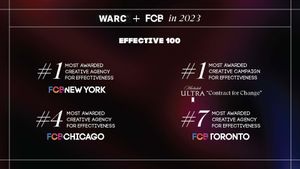Interior design is set to embrace significant changes as we move toward 2025, with experts predicting trends focused significantly on sustainability, innovative ceiling designs, and the incorporation of natural materials.
According to Global Sources, ecological approaches are deemed the main trend of the year. This shift reflects the growing awareness among consumers and designers alike of the importance of creating not just aesthetically pleasing interiors but also environmentally responsible ones.
Crucially, the ceiling is no longer just the top of the room; it's becoming the focal point of interior design. Stylish ceilings make spaces visually more attractive and harmonious, contributing to how we experience our environments.
So, what are the specific trends to watch for? The first standout is the coffered ceiling, which, though known from classical designs, has been reimagined for modern decor. Contemporary coffered ceilings feature clean geometric depressions without excessive ornamentation, adding volume and sophistication to any room.
Next, we have the cove or tray ceiling, characterized by its central indentation. These ceilings are often crafted from drywall or wood and benefit immensely from indirect lighting, which enhances ambiance and makes spaces feel more spacious.
Suspended ceilings remain popular, particularly those featuring integrated LED lighting. These designs not only provide functional illumination but also create sleek, modern effects, projecting a clean and contemporary aesthetic.
The trend for wooden beams is also making waves, perfectly aligning with the concept of eco-friendly design. Whether made from real timber or stylishly crafted from lighter materials, wooden beams infuse warmth and charm, complementing minimalist decorations beautifully.
Interestingly, the once-discarded notion of wallpapered ceilings is experiencing a revival. Consumers are encouraged to opt for subtle patterns and neutral colors to maintain harmony throughout their interior spaces.
Lighting plays a pivotal role when it pertains to ceiling design, with effective choices significantly altering the perception of height and spaciousness. Strategies for optimal ceiling illumination will focus on integrated LED fixtures which deliver uniform brightness, alongside hidden accent lighting crafted to create the visual illusion of floating ceilings.
Minimalistic hanging lamps are trimmed to draw focus onto ceilings without overwhelming the design. This trend enables the room to remain uncluttered, allowing for key design elements to shine.
Finally, as homebuyers weigh options between refurbished or raw spaces, the selection process often hinges on personal preferences concerning design viability and budgetary constraints.
Remodeling requires thoughtful consideration since alterations often involve permits, especially for changes touching load-bearing elements or utilities. Such foresight can prevent complications, ensuring designs evolve to fully meet individual needs and sustainability goals.
The trends shaping interior design for 2025 indicate not just aesthetic preferences but also broader moves toward eco-friendliness and innovation. By embracing these principles, homeowners can create spaces reflecting both personal style and sustainable living values.



